Stabilisation Agriculture: Implementing Urban Agriculture and Agroforestry in Forced Displacement Settings
VerifiedAdded on 2023/06/12
|15
|888
|407
AI Summary
This presentation discusses stabilisation agriculture, its benefits, stakeholders, challenges, and interventions in forced displacement settings. It highlights the implementation of urban agriculture and agroforestry in Kakuma refugee camp in Kenya, and how it can enhance food security and livelihoods for refugees.
Contribute Materials
Your contribution can guide someone’s learning journey. Share your
documents today.
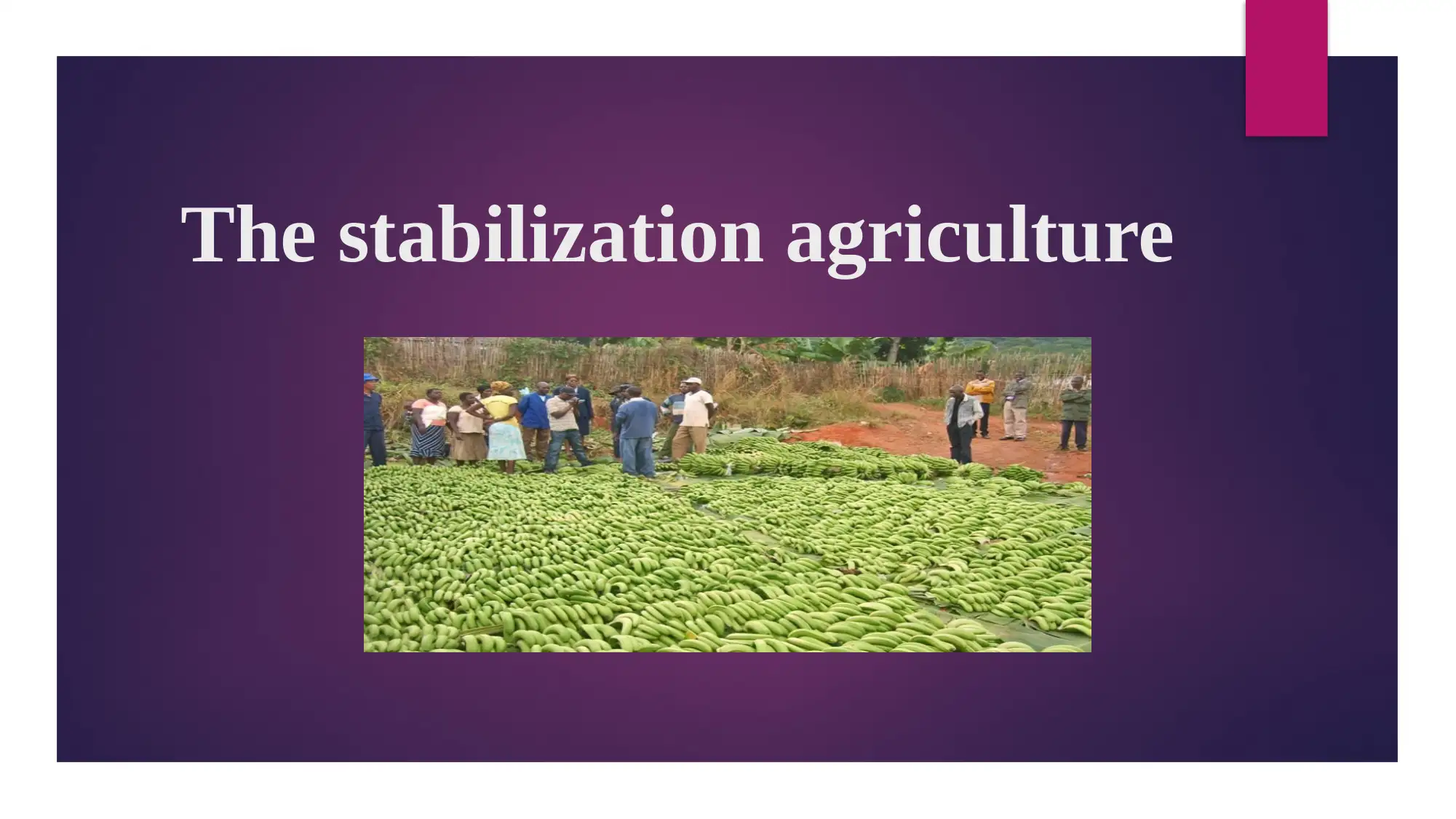
The stabilization agriculture
Secure Best Marks with AI Grader
Need help grading? Try our AI Grader for instant feedback on your assignments.
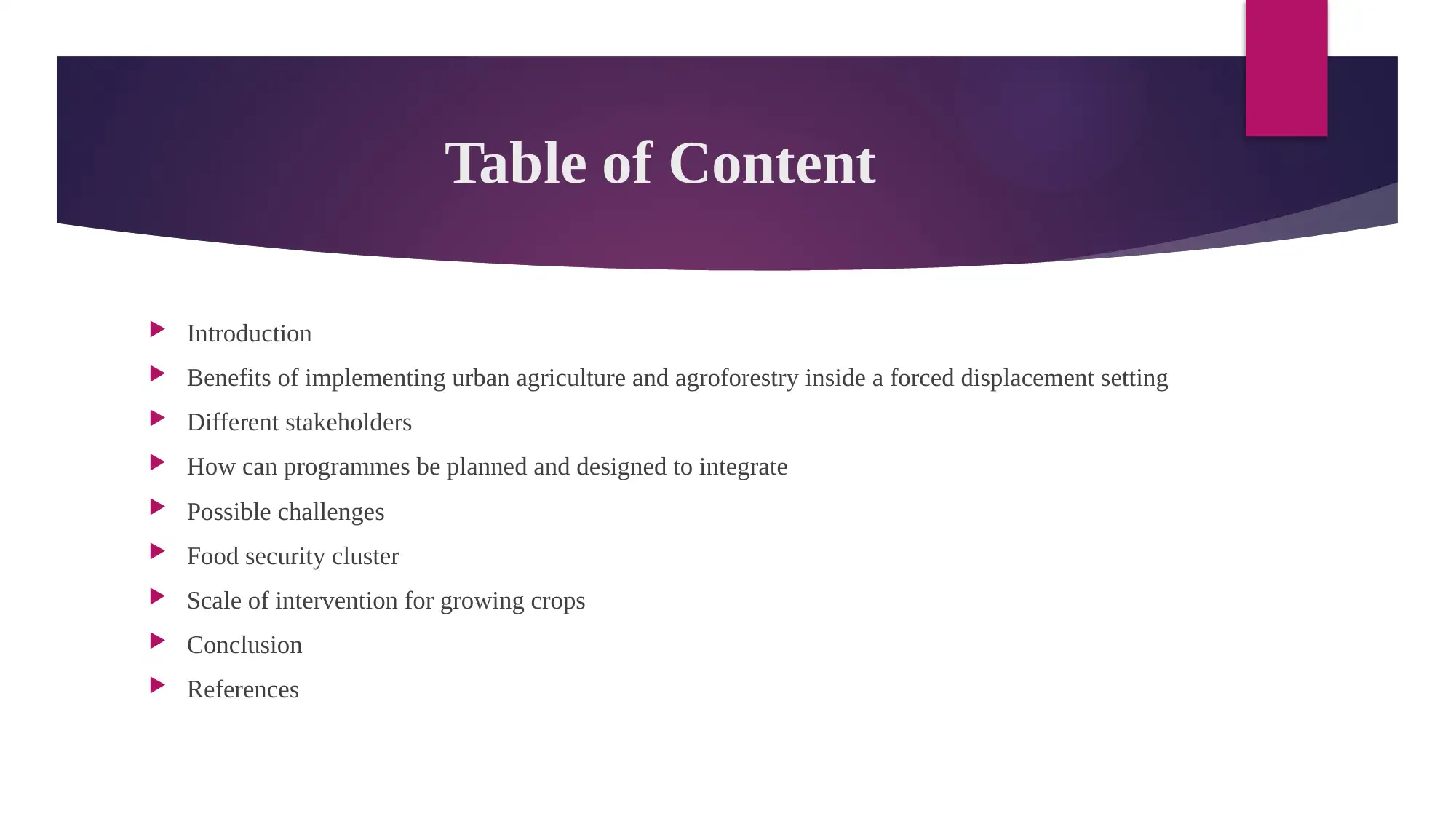
Table of Content
Introduction
Benefits of implementing urban agriculture and agroforestry inside a forced displacement setting
Different stakeholders
How can programmes be planned and designed to integrate
Possible challenges
Food security cluster
Scale of intervention for growing crops
Conclusion
References
Introduction
Benefits of implementing urban agriculture and agroforestry inside a forced displacement setting
Different stakeholders
How can programmes be planned and designed to integrate
Possible challenges
Food security cluster
Scale of intervention for growing crops
Conclusion
References
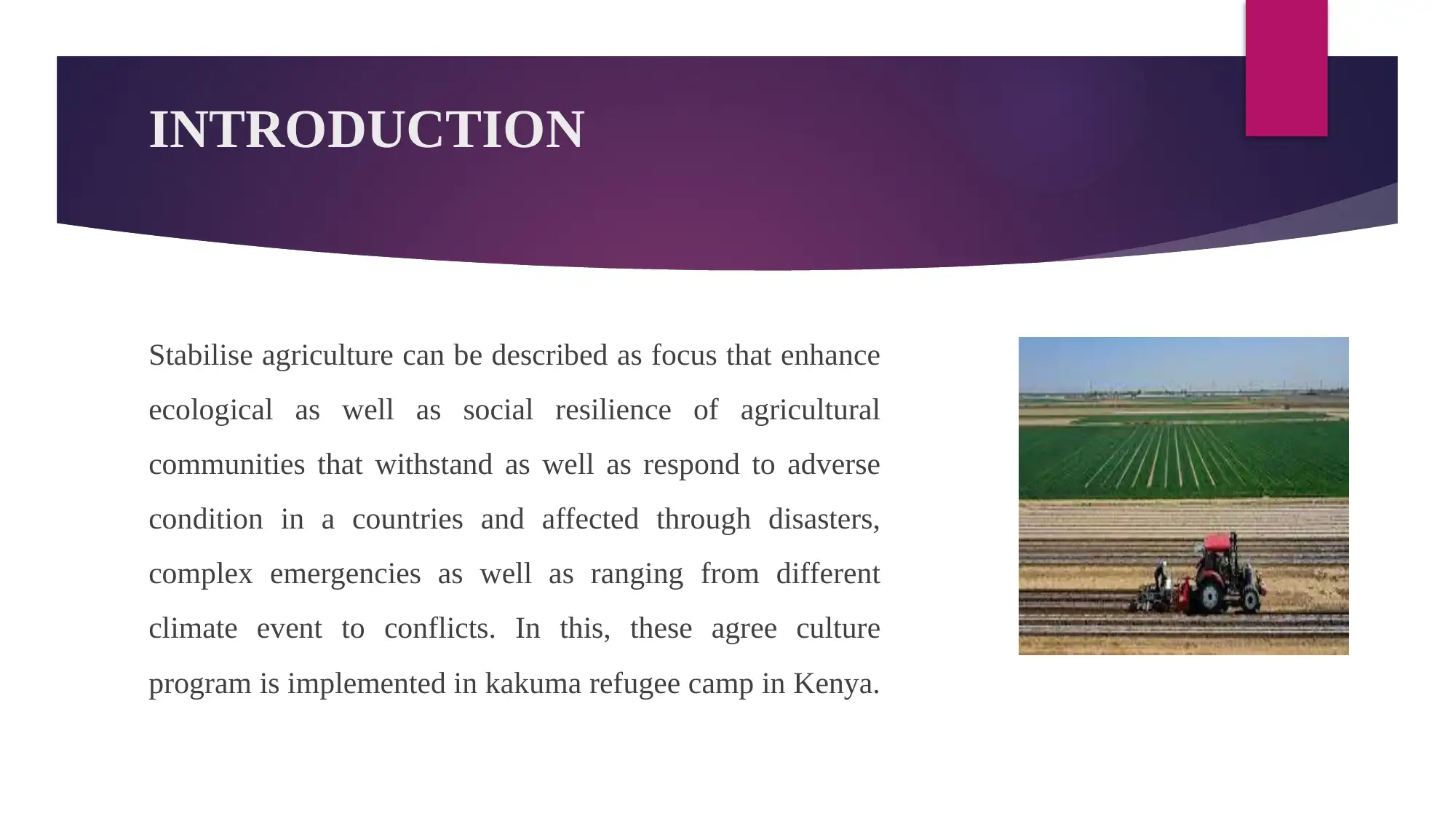
INTRODUCTION
Stabilise agriculture can be described as focus that enhance
ecological as well as social resilience of agricultural
communities that withstand as well as respond to adverse
condition in a countries and affected through disasters,
complex emergencies as well as ranging from different
climate event to conflicts. In this, these agree culture
program is implemented in kakuma refugee camp in Kenya.
Stabilise agriculture can be described as focus that enhance
ecological as well as social resilience of agricultural
communities that withstand as well as respond to adverse
condition in a countries and affected through disasters,
complex emergencies as well as ranging from different
climate event to conflicts. In this, these agree culture
program is implemented in kakuma refugee camp in Kenya.
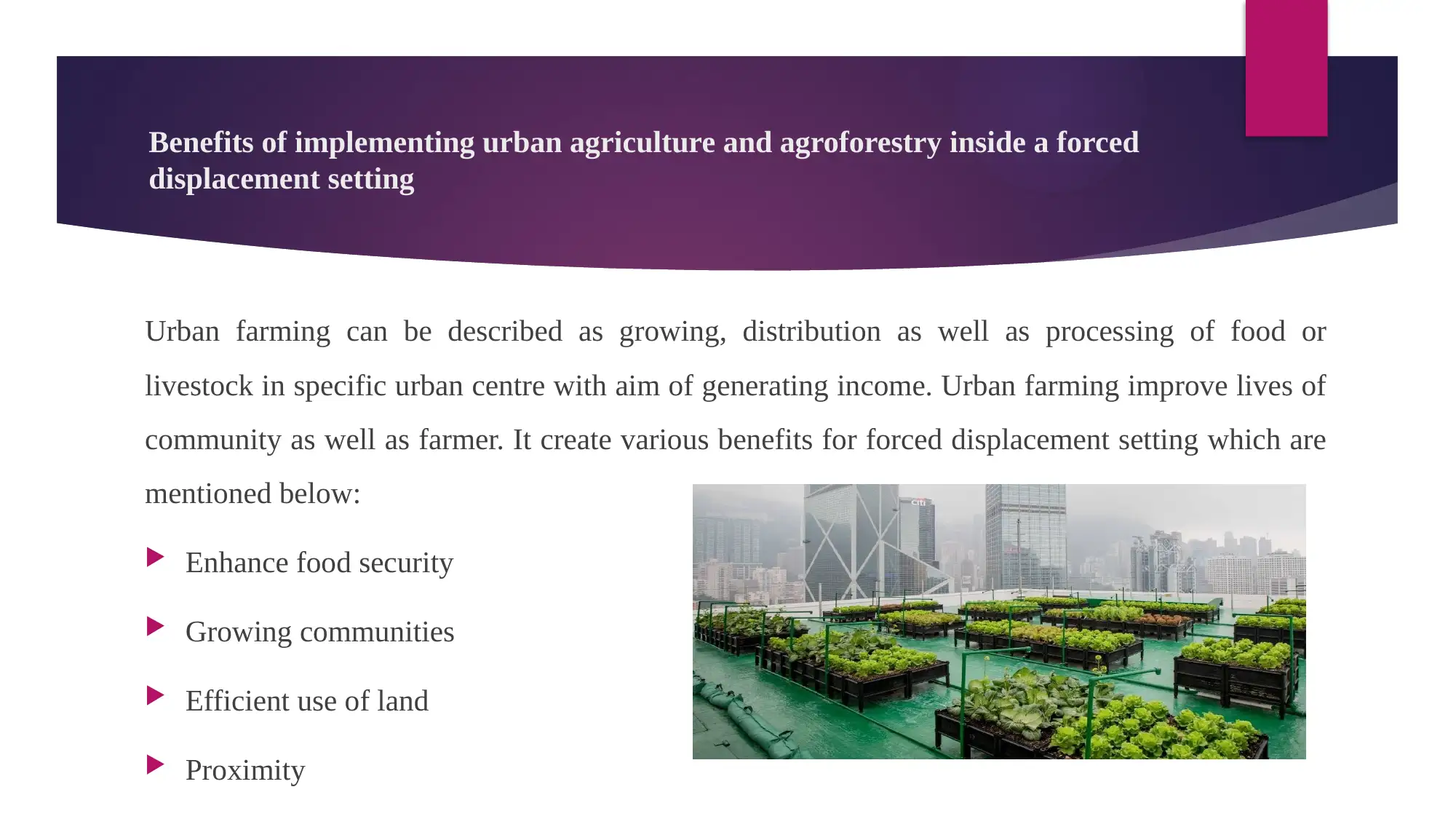
Benefits of implementing urban agriculture and agroforestry inside a forced
displacement setting
Urban farming can be described as growing, distribution as well as processing of food or
livestock in specific urban centre with aim of generating income. Urban farming improve lives of
community as well as farmer. It create various benefits for forced displacement setting which are
mentioned below:
Enhance food security
Growing communities
Efficient use of land
Proximity
displacement setting
Urban farming can be described as growing, distribution as well as processing of food or
livestock in specific urban centre with aim of generating income. Urban farming improve lives of
community as well as farmer. It create various benefits for forced displacement setting which are
mentioned below:
Enhance food security
Growing communities
Efficient use of land
Proximity
Secure Best Marks with AI Grader
Need help grading? Try our AI Grader for instant feedback on your assignments.
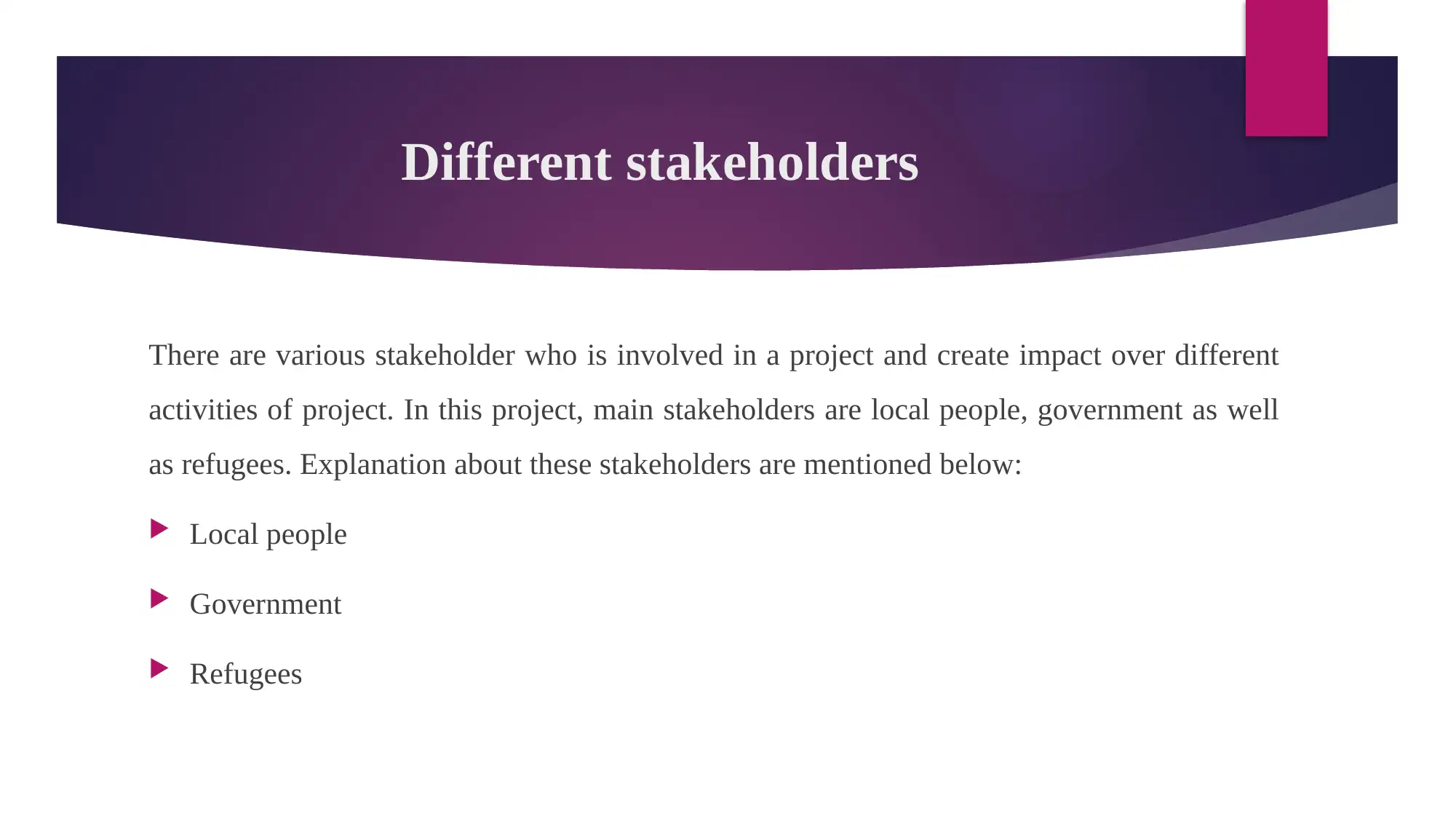
Different stakeholders
There are various stakeholder who is involved in a project and create impact over different
activities of project. In this project, main stakeholders are local people, government as well
as refugees. Explanation about these stakeholders are mentioned below:
Local people
Government
Refugees
There are various stakeholder who is involved in a project and create impact over different
activities of project. In this project, main stakeholders are local people, government as well
as refugees. Explanation about these stakeholders are mentioned below:
Local people
Government
Refugees
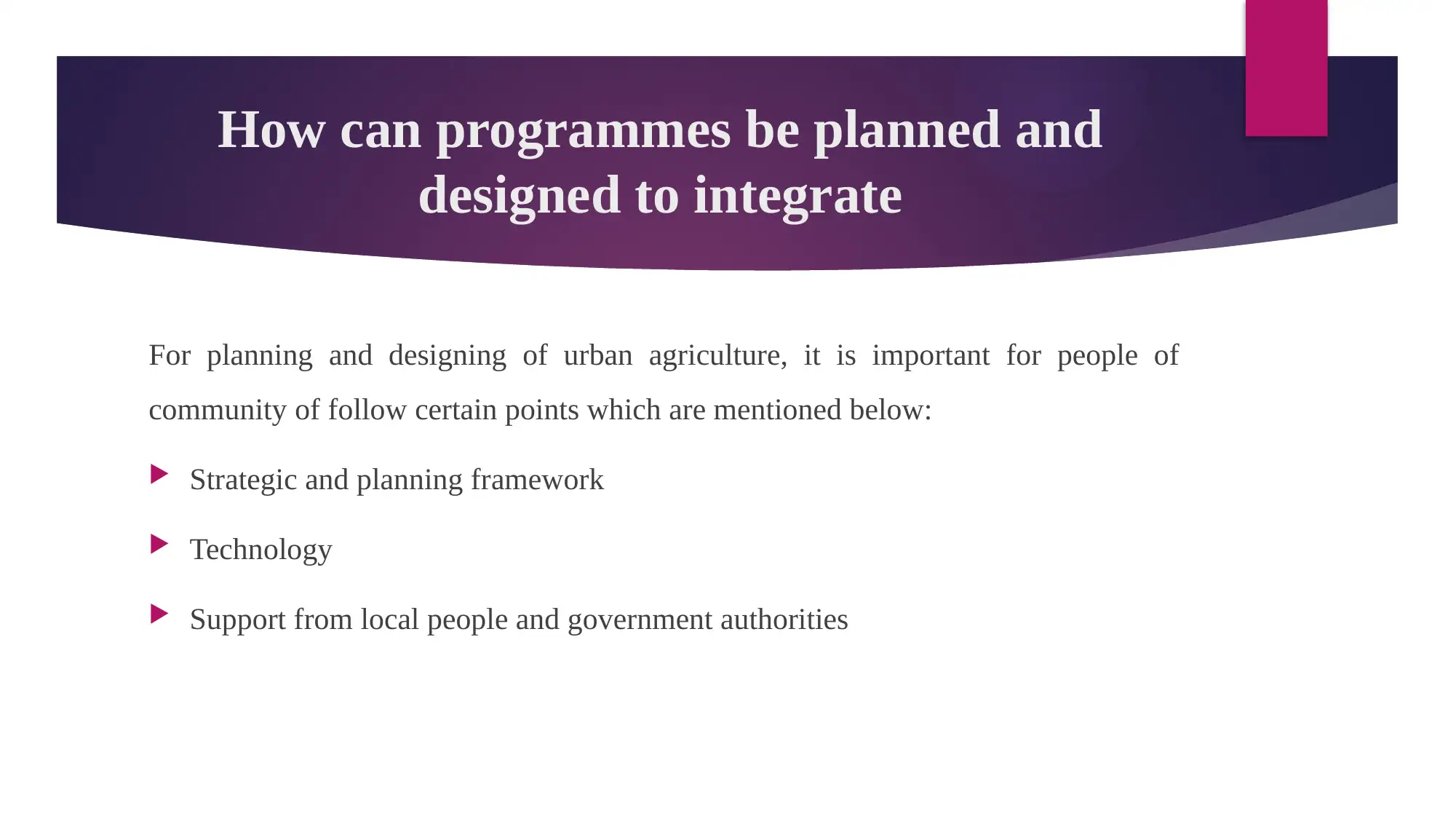
How can programmes be planned and
designed to integrate
For planning and designing of urban agriculture, it is important for people of
community of follow certain points which are mentioned below:
Strategic and planning framework
Technology
Support from local people and government authorities
designed to integrate
For planning and designing of urban agriculture, it is important for people of
community of follow certain points which are mentioned below:
Strategic and planning framework
Technology
Support from local people and government authorities
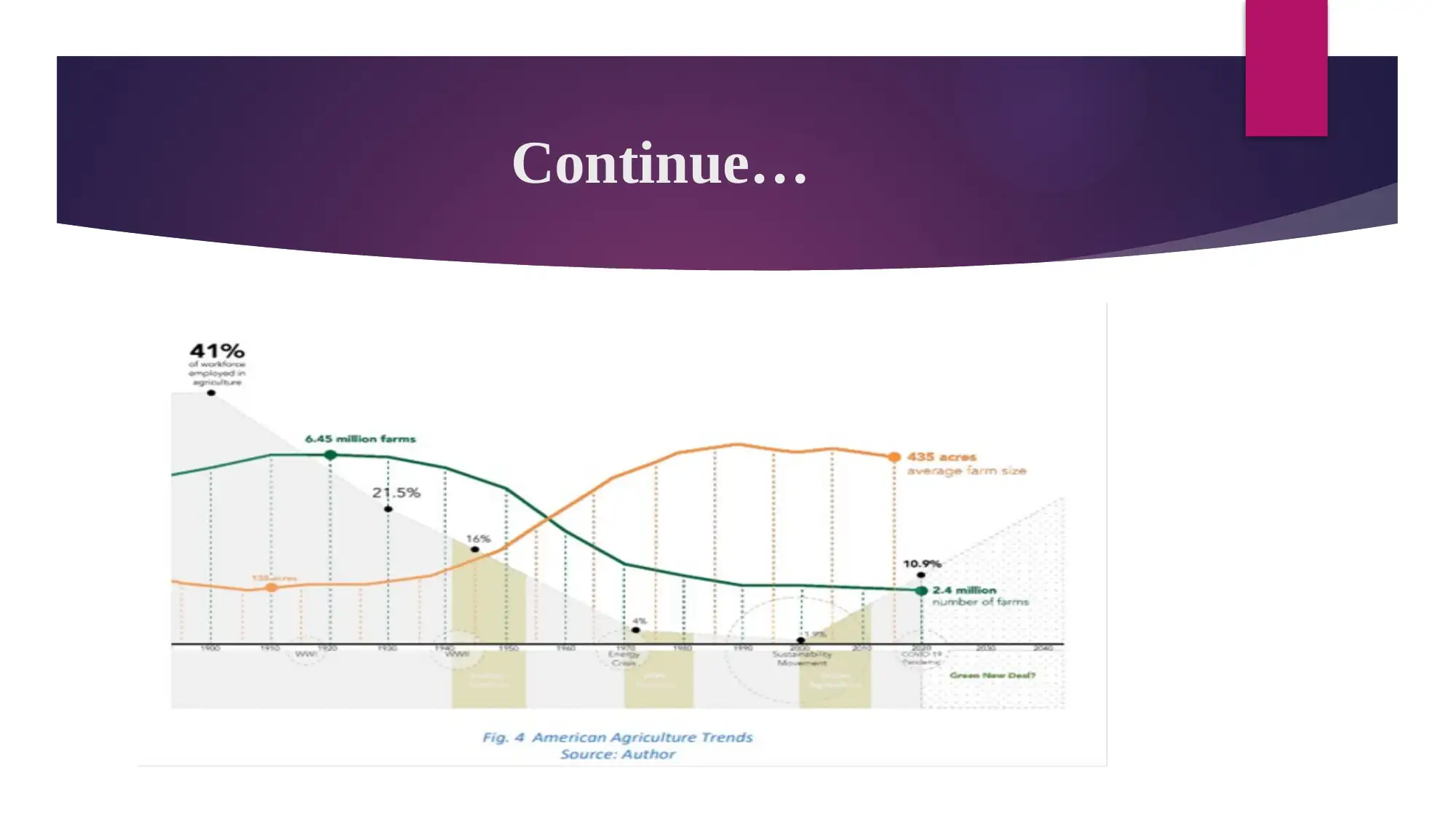
Continue…
Paraphrase This Document
Need a fresh take? Get an instant paraphrase of this document with our AI Paraphraser
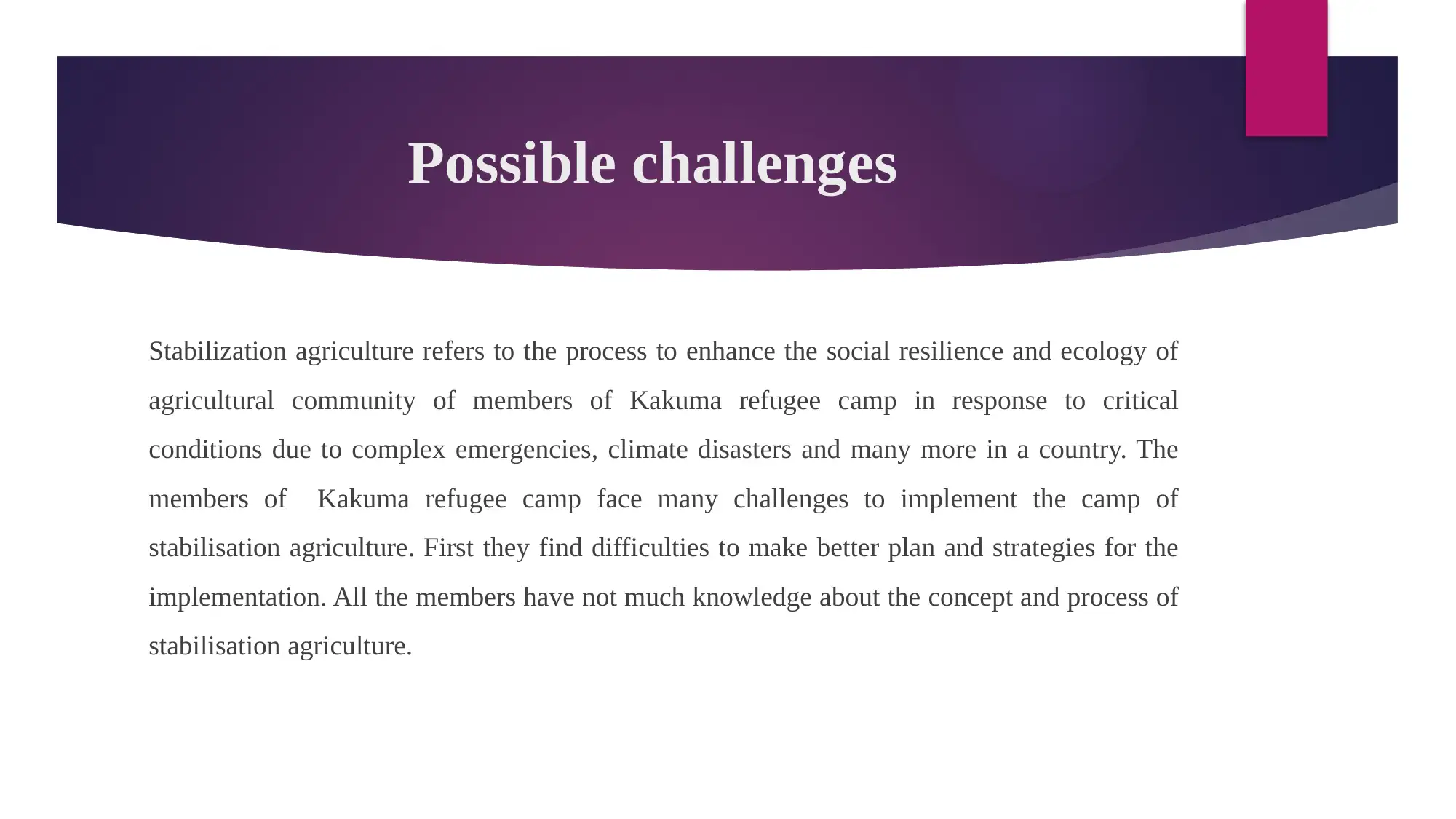
Possible challenges
Stabilization agriculture refers to the process to enhance the social resilience and ecology of
agricultural community of members of Kakuma refugee camp in response to critical
conditions due to complex emergencies, climate disasters and many more in a country. The
members of Kakuma refugee camp face many challenges to implement the camp of
stabilisation agriculture. First they find difficulties to make better plan and strategies for the
implementation. All the members have not much knowledge about the concept and process of
stabilisation agriculture.
Stabilization agriculture refers to the process to enhance the social resilience and ecology of
agricultural community of members of Kakuma refugee camp in response to critical
conditions due to complex emergencies, climate disasters and many more in a country. The
members of Kakuma refugee camp face many challenges to implement the camp of
stabilisation agriculture. First they find difficulties to make better plan and strategies for the
implementation. All the members have not much knowledge about the concept and process of
stabilisation agriculture.
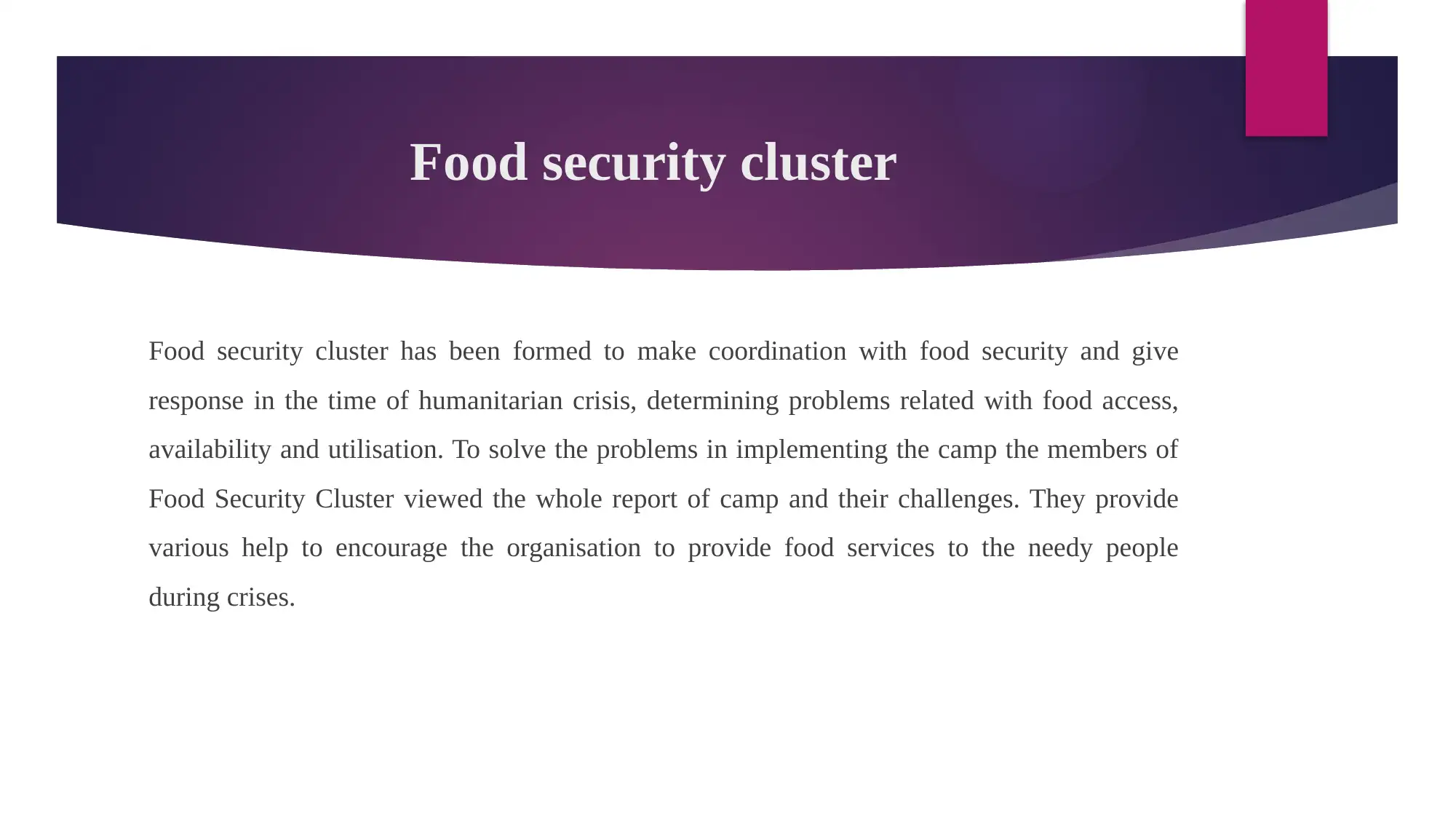
Food security cluster
Food security cluster has been formed to make coordination with food security and give
response in the time of humanitarian crisis, determining problems related with food access,
availability and utilisation. To solve the problems in implementing the camp the members of
Food Security Cluster viewed the whole report of camp and their challenges. They provide
various help to encourage the organisation to provide food services to the needy people
during crises.
Food security cluster has been formed to make coordination with food security and give
response in the time of humanitarian crisis, determining problems related with food access,
availability and utilisation. To solve the problems in implementing the camp the members of
Food Security Cluster viewed the whole report of camp and their challenges. They provide
various help to encourage the organisation to provide food services to the needy people
during crises.

Scale of intervention for growing crops
There are different types of technological institutional as well as policy options
are applicable in different content. Different types of technologies are suitable
for different things and can be adopted by different farmers that is also
influenced through rainfall pattern, soil type, crop livestock, altitude, soil type
and others. It is important to identify criteria that is biophysical, social
economic as well as institutional criteria that influence suitability as well as
adoption of technology.
There are different types of technological institutional as well as policy options
are applicable in different content. Different types of technologies are suitable
for different things and can be adopted by different farmers that is also
influenced through rainfall pattern, soil type, crop livestock, altitude, soil type
and others. It is important to identify criteria that is biophysical, social
economic as well as institutional criteria that influence suitability as well as
adoption of technology.
Secure Best Marks with AI Grader
Need help grading? Try our AI Grader for instant feedback on your assignments.
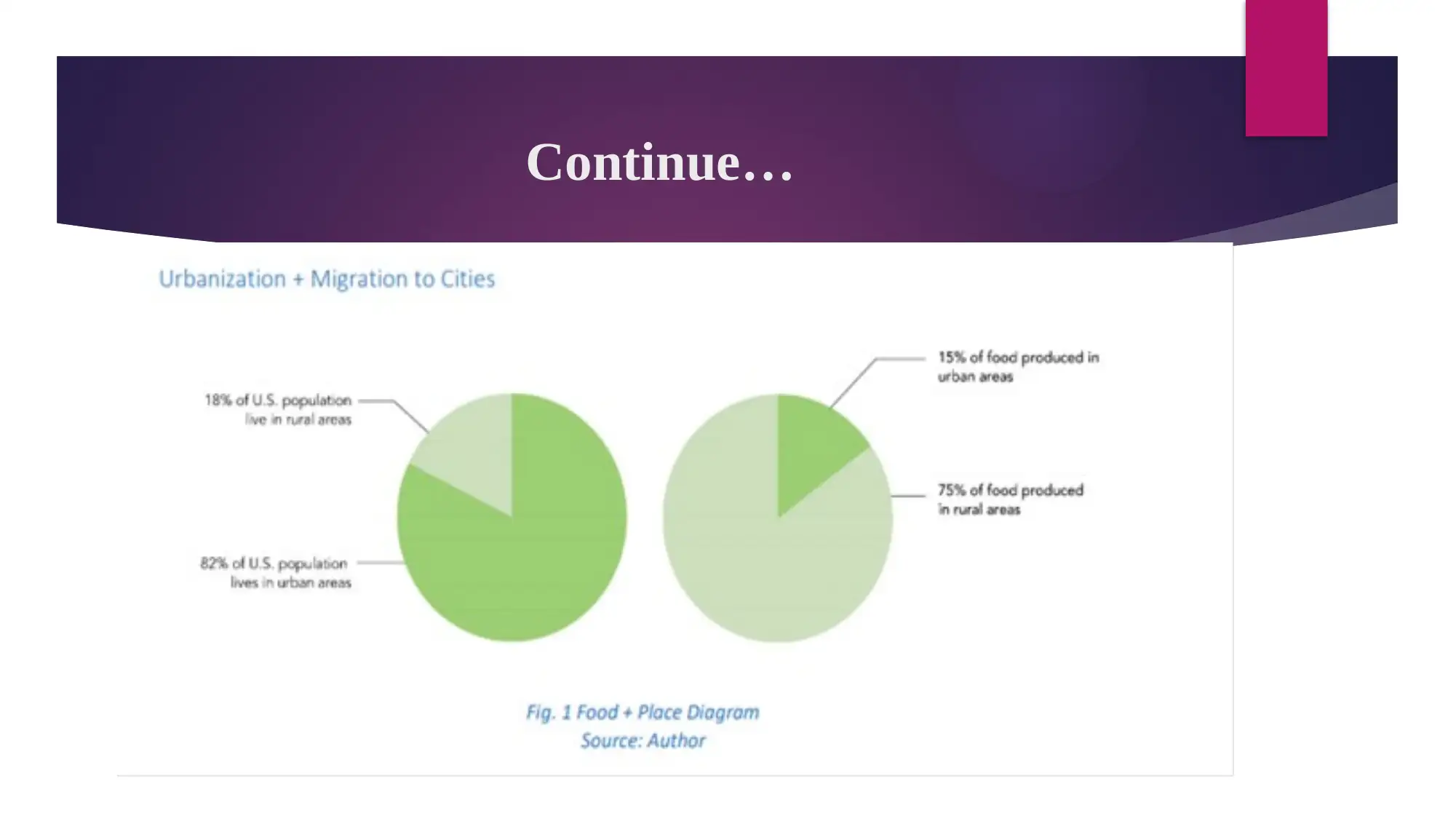
Continue…
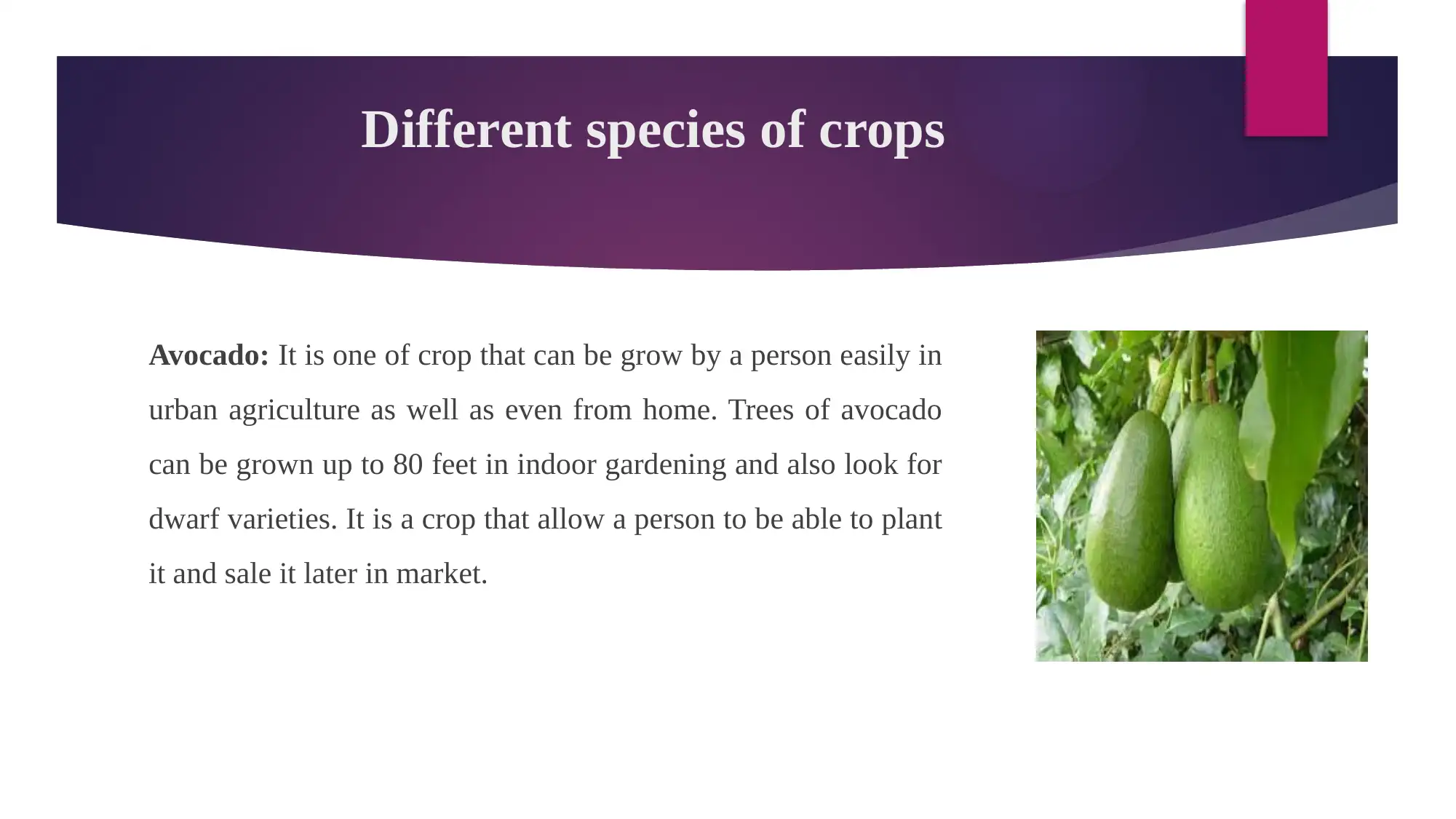
Different species of crops
Avocado: It is one of crop that can be grow by a person easily in
urban agriculture as well as even from home. Trees of avocado
can be grown up to 80 feet in indoor gardening and also look for
dwarf varieties. It is a crop that allow a person to be able to plant
it and sale it later in market.
Avocado: It is one of crop that can be grow by a person easily in
urban agriculture as well as even from home. Trees of avocado
can be grown up to 80 feet in indoor gardening and also look for
dwarf varieties. It is a crop that allow a person to be able to plant
it and sale it later in market.

How problem of food insecurity can be
overcome by Refugee camp of Kenya
The UNHCR and the WFP are the bodies who have implemented the multi-storey gardens in the
refugee camps by its Partners in Kenya in the year 2006 as well as in Ethiopia in the year 2008. these
gardens are considered as the part of the food security strategy the refugees can contribute in the
consumption of the food.
overcome by Refugee camp of Kenya
The UNHCR and the WFP are the bodies who have implemented the multi-storey gardens in the
refugee camps by its Partners in Kenya in the year 2006 as well as in Ethiopia in the year 2008. these
gardens are considered as the part of the food security strategy the refugees can contribute in the
consumption of the food.
Paraphrase This Document
Need a fresh take? Get an instant paraphrase of this document with our AI Paraphraser
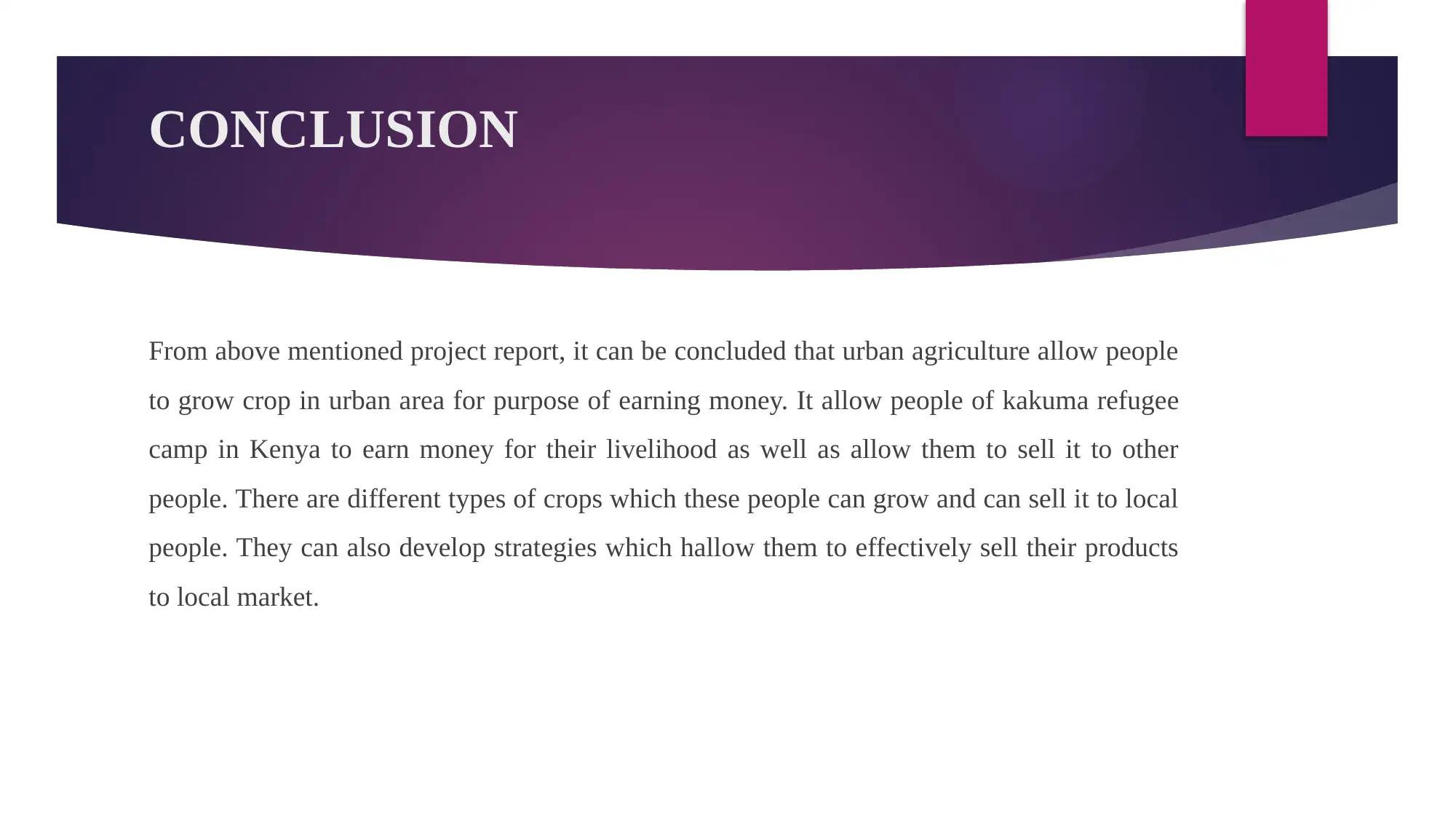
CONCLUSION
From above mentioned project report, it can be concluded that urban agriculture allow people
to grow crop in urban area for purpose of earning money. It allow people of kakuma refugee
camp in Kenya to earn money for their livelihood as well as allow them to sell it to other
people. There are different types of crops which these people can grow and can sell it to local
people. They can also develop strategies which hallow them to effectively sell their products
to local market.
From above mentioned project report, it can be concluded that urban agriculture allow people
to grow crop in urban area for purpose of earning money. It allow people of kakuma refugee
camp in Kenya to earn money for their livelihood as well as allow them to sell it to other
people. There are different types of crops which these people can grow and can sell it to local
people. They can also develop strategies which hallow them to effectively sell their products
to local market.
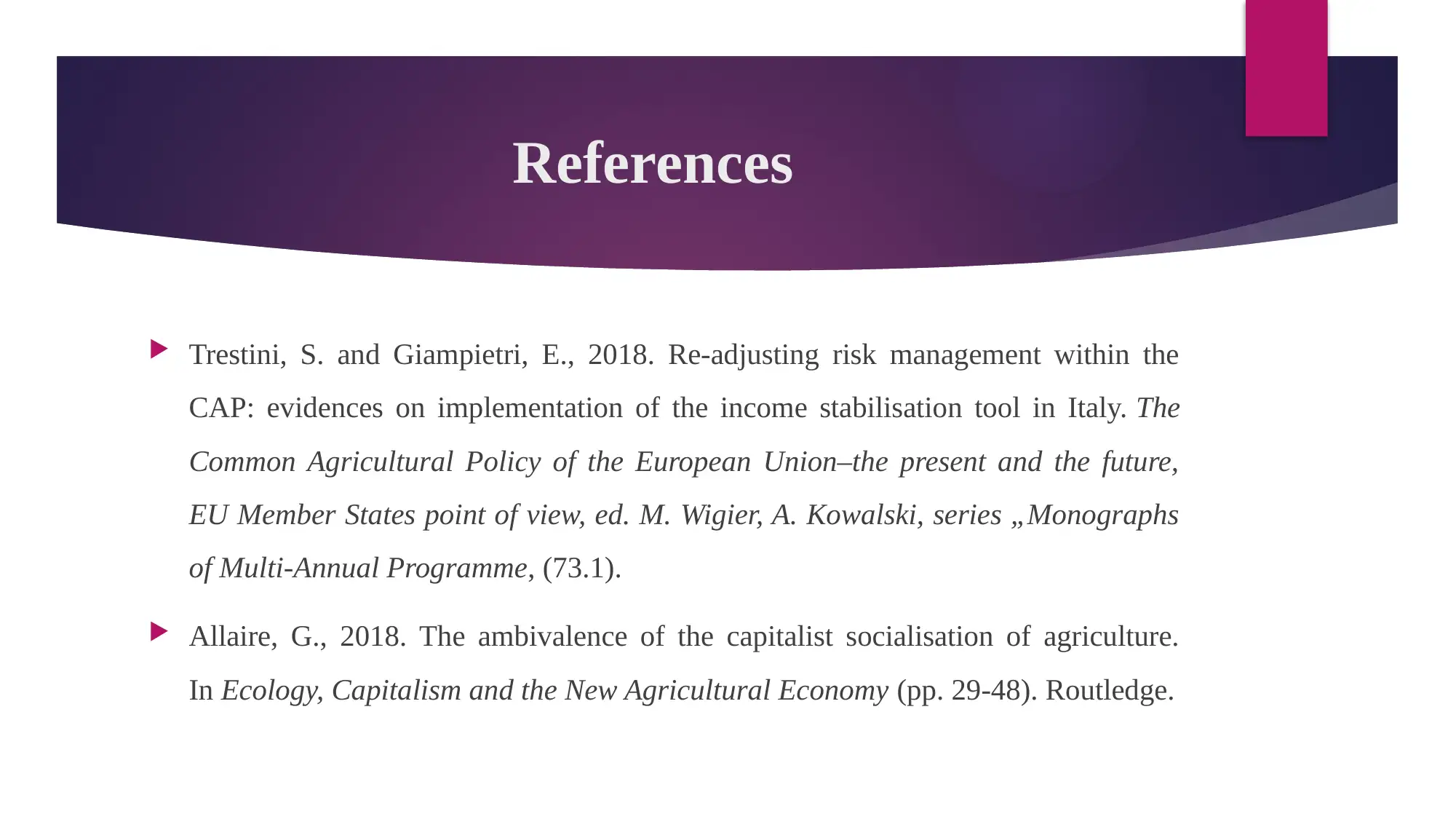
References
Trestini, S. and Giampietri, E., 2018. Re-adjusting risk management within the
CAP: evidences on implementation of the income stabilisation tool in Italy. The
Common Agricultural Policy of the European Union–the present and the future,
EU Member States point of view, ed. M. Wigier, A. Kowalski, series „Monographs
of Multi-Annual Programme, (73.1).
Allaire, G., 2018. The ambivalence of the capitalist socialisation of agriculture.
In Ecology, Capitalism and the New Agricultural Economy (pp. 29-48). Routledge.
Trestini, S. and Giampietri, E., 2018. Re-adjusting risk management within the
CAP: evidences on implementation of the income stabilisation tool in Italy. The
Common Agricultural Policy of the European Union–the present and the future,
EU Member States point of view, ed. M. Wigier, A. Kowalski, series „Monographs
of Multi-Annual Programme, (73.1).
Allaire, G., 2018. The ambivalence of the capitalist socialisation of agriculture.
In Ecology, Capitalism and the New Agricultural Economy (pp. 29-48). Routledge.
1 out of 15
Your All-in-One AI-Powered Toolkit for Academic Success.
+13062052269
info@desklib.com
Available 24*7 on WhatsApp / Email
![[object Object]](/_next/static/media/star-bottom.7253800d.svg)
Unlock your academic potential
© 2024 | Zucol Services PVT LTD | All rights reserved.